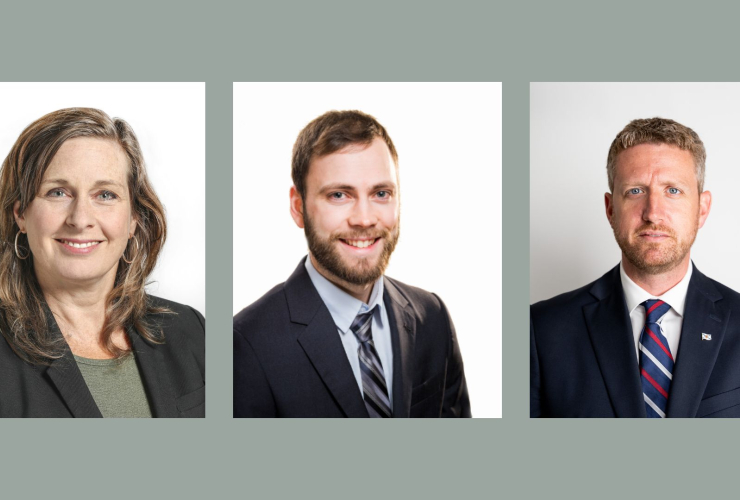The peatlands that wrap around Hudson Bay and James Bay are at risk from a warming climate and development. Now members of some First Nations who have lived in the region since time immemorial want to be employed to protect their land.
The Mushkegowuk Council, which represents eight First Nations in the region, is developing an estimated 300,000-square-kilometre conservation zone to protect the peatlands and create long-term conservation jobs and revenue.
But while the federal government is on board to fund the project, negotiations with Ontario have come to a standstill, said Lawrence Martin, interim director of lands and resources for the Mushkegowuk Council.
“(The conservation area) would be Mushkegowuk’s contribution to try and save the world and save ourselves from destroying everything that we have,” Martin said. “We’re going to be working with the feds on that. But the catch is, Ontario has to agree.”
At COP15 last year, Prime Minister Justin Trudeau announced $800 million in funding for up to four Indigenous-led conservation projects under its Project Finance for Permanence model, which also brings money in from other levels of government and private philanthropists.
The federal government also lists the Mushkegowuk Council’s conservation area as one of its projects. The Mushkegowuk Council has reached out to the Ontario government to discuss the conservation area.
“Right now, Ontario has not really had a discussion with us,” Martin said. “There's been a refusal to have a discussion on that note or even to work together with the feds on identifying conservation areas within Mushkegowuk territory.”
Canada’s National Observer reached out to Ontario’s Ministry of Indigenous Affairs and Northern Development and Ontario’s Ministry of Natural Resources and Forestry for comment. Neither was able to respond in time for publication.
The First Nations who live on the peatlands — also known as muskeg — call the land “Yehewin Aski” or “Nênêwin.” The Cree words describe the peatlands as breathing lands.
“The elders, how they describe the breathing lands, the peatlands, is that it cleanses,” Martin said. “They’re like the lungs of the Earth.”
Locked within the carpet of bright green and muddy brown hues of the peatlands lies thousands of years' worth of planet-warming carbon.
When carbon-hungry plants and mosses die, the moisture of the peatlands prevents the dead organic matter from decomposing and releasing that carbon into the atmosphere, warming the planet. Some of that carbon is captured in peatlands that freeze in a layer of permafrost.
Wildlife Conservation Society Canada peatlands expert Lorna Harris estimates the peatlands hold up to 39 billion tonnes of carbon. In planet-warming gas, that’s equivalent to 43 billion tonnes of carbon dioxide — more than 20 times the total carbon dioxide emissions Canada reported between 2011 and 2021.
If left undisturbed, the muskeg will store that carbon for thousands of years, effectively cooling the planet.
“It is absolutely critical that that carbon stays in the ground and doesn't return to the atmosphere,” Harris said.
However, mining exploration and development have disturbed the peat. According to Harris’s research, the DeBeers Victor Diamond Mine contributed to draining the peat and changing the water flow through the muskeg.
Martin said mining developments in the Ring of Fire, about 500 kilometres north of Thunder Bay, are causing similar concerns.
Elders have seen first-hand the effects of these developments, he said. The permafrost is thawing and the rivers that help keep the muskeg saturated with water are drying up.
“When you wander around through this area, you can smell the gas, even in the wintertime,” Martin said. “You can even light a fire on the ice and it will explode with methane gases. So we're coming to a time, it seems, as the elders described, where the world is changing a lot.”
The Mushkegowuk Council has identified about 130,000 square kilometres of peatland they want to conserve. The area also includes about 75,000 square kilometres of forested area and 90,000 square kilometres of water in Hudson Bay.
Martin said the project would employ about 200 Mushkegowuk people in conservation jobs. These jobs would last as long as the area remains protected.
The Great Bear Rainforest along British Columbia’s coast was Canada’s first conservation area financed under the Project Finance for Permanence model.
Last week, the federal government announced a similar agreement with several Indigenous governments in the Northwest Territories and the Government of the Northwest Territories for a Project Finance for Permanence conservation area.
these reports MUST get spread
these reports MUST get spread widely. I am a visual artist who has now done two works that incorporate info on what Ford gove has done and plans to do to destroy Yehwin Aski and the wonders of peat in the world!
Fors gov playing divide and conquer neglect and denigrate sell mining rights (to Australia)and ignore all need to preserve, respect, share
we MUST inform the mids, who will educate their parents! go teachers!
my art is available to use in classes
To make it nice and easy for
To make it nice and easy for everyone, why not provide a link to your work?
Thanks, we need your (this kind) of environmental advocacy!
Putting profit before the
Putting profit before the survival of our planet is a fool’s game.
Our provincial government, and recently provincial governments across Canada, are choosing profit over the wisdom of protecting our planet. This has an incremental impact, project by project, with environmentally devastating results






Comments